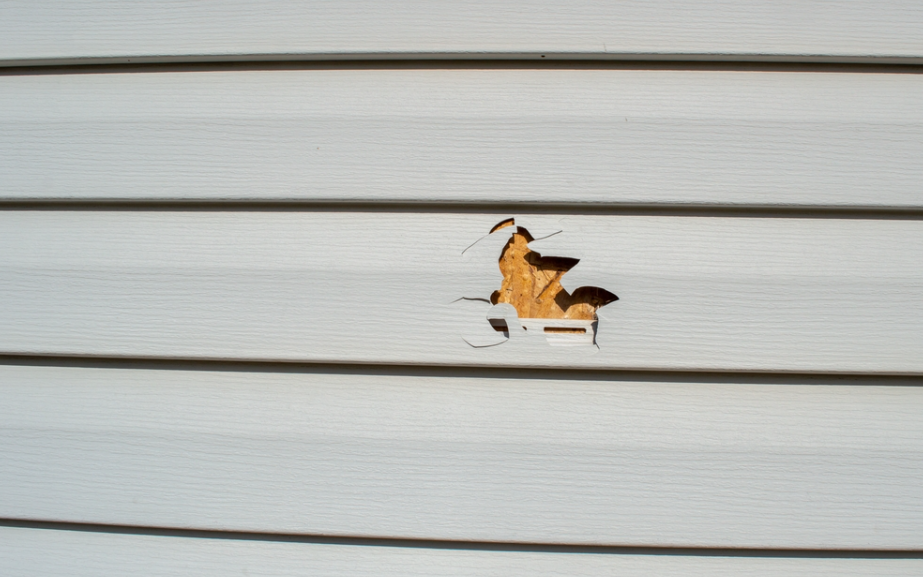
Siding plays a crucial role in protecting your home from the elements while enhancing its curb appeal. However, over time, exposure to harsh weather, moisture, and everyday wear and tear can lead to cracks, warping, and other damage. If left unchecked, damaged siding can cause structural issues and increase energy costs.
In this guide, we’ll cover how to identify siding damage, perform repairs, and maintain your siding to keep your home looking great and well-protected.
Signs Your Siding Needs Repair
Before jumping into repairs, it’s important to identify whether your siding has issues that need attention. Here are common signs of siding damage:
✅ Cracks, Chips, or Holes – These can allow moisture to seep in, leading to mold and rot.
✅ Warping or Buckling – Heat and moisture can cause siding to warp, affecting its durability.
✅ Peeling Paint or Fading Color – Indicates exposure to extreme weather or aging materials.
✅ Mold, Mildew, or Rot – Excess moisture trapped behind siding can cause decay.
✅ Loose or Missing Siding Panels – Strong winds and storms can dislodge siding, leaving your home vulnerable.
✅ Increased Energy Bills – If your heating or cooling costs are rising, damaged siding may be reducing your home’s insulation efficiency.
Step-by-Step Siding Repair Guide
The repair method depends on the type of siding material you have. Below, we’ll cover vinyl, wood, and fiber cement siding repairs.
1. Repairing Vinyl Siding
🔹 Small Cracks & Holes
- Clean the damaged area with soap and water.
- Use exterior-grade caulk or a vinyl siding patch kit to fill the crack or hole.
- Smooth the caulk and let it dry completely before painting over it (if necessary).
🔹 Replacing a Damaged Vinyl Panel
- Use a siding removal tool (zip tool) to unlock the damaged panel.
- Pull the panel out and remove any nails securing it.
- Slide a new piece of siding into place and secure it with nails.
- Lock the top panel back in using the zip tool.
2. Repairing Wood Siding
🔹 Fixing Small Holes & Cracks
- Sand the area lightly to remove rough edges.
- Fill cracks or holes with wood filler or epoxy putty.
- Once dry, sand it smooth and repaint to match the existing siding.
🔹 Replacing a Rotten or Warped Board
- Use a pry bar to carefully remove the damaged board.
- Cut a replacement board to match the existing one.
- Secure it with nails and seal any gaps with caulk.
- Paint or stain the new board to blend in with the rest of the siding.
3. Repairing Fiber Cement Siding
🔹 Patching Minor Damage
- Clean the damaged area and apply a patching compound designed for fiber cement.
- Smooth it out and let it dry before repainting.
🔹 Replacing a Fiber Cement Panel
- Carefully remove the damaged panel using a pry bar.
- Cut a new panel to size and attach it with galvanized nails.
- Seal the edges with caulk and paint over the repaired section.
How to Prevent Future Siding Damage
✔ Regular Inspections – Check your siding at least twice a year for signs of wear or damage.
✔ Keep Gutters Clean – Clogged gutters can cause water to overflow and damage siding.
✔ Trim Nearby Trees & Bushes – Prevent scratches and impact damage from overgrown branches.
✔ Power Wash Occasionally – Remove dirt, mildew, and grime to keep siding looking new.
✔ Repaint or Seal When Needed – Wood and fiber cement siding require periodic sealing or painting to maintain durability.
When to Call a Professional
If siding damage is extensive, involves structural issues, or affects multiple sections, hiring a professional contractor is the best option. Professional siding experts can assess the situation, recommend the best repair methods, and ensure your siding remains in top shape.
Final Thoughts
Siding repair is essential for maintaining your home’s protection, energy efficiency, and appearance. Whether you tackle minor repairs yourself or call in an expert, regular maintenance will extend the life of your siding and help you avoid costly replacements down the line.
Need professional Calgary siding repair? Contact a trusted expert today for a free inspection and estimate!